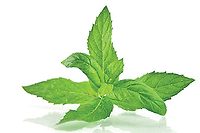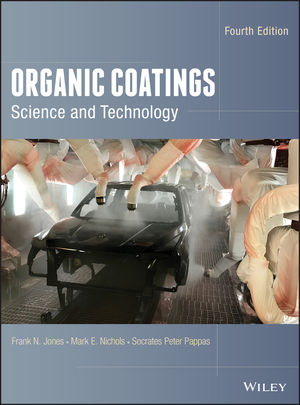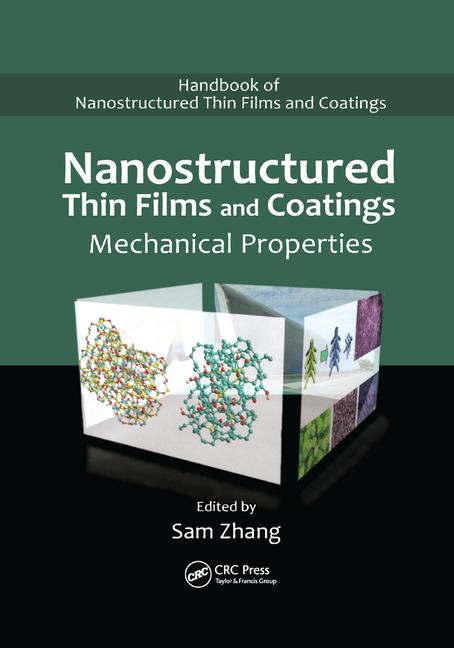UV-Cured Hybrid Sol-Gel Coatings
Aeronautical and DTM Applications


















Corrosion protection in the aeronautic industry is a key issue, and multilayer coatings are used to protect aeronautical metallic substrates. A typical system contains hexavalent chromium, or chromate, to provide high, active corrosion protection, and is made up of three layers applied on a prepared surface. However, hexavalent chromium is an extremely toxic, carcinogenic, mutagenic and environmentally hazardous compound. Beginning in 2017, the use of chromate will be subjected to authorization under the REACH directive. Hence, the replacement of chromate compounds is an urgent and major issue for the aeronautic industry. Up to now, Airbus Group Businesses Units, including Airbus, have succeeded in replacing chromate in anodizing and etching (chemical acid treatment to deoxidize and prepare metallic surfaces) steps. In addition, different alternatives based on inorganic and organic inhibitors, low-temperature plasma deposition or sol-gel coatings1 have been investigated. To date, none of these approaches are as efficient as chromate-based coatings.
In the framework of the UV-Curable Hybrid Sol-Gel Coatings for Aeronautical Substrates (MHYRCEA) project belonging to The French National Research Agency (ANR) research program, we combined a UV-curing technology and hybrid sol-gel chemistry to develop a single-step route toward chromate-free coatings. The UV-driven procedure is compliant with novel environmental regulations and the reduction of manufacturing cycle time in the aeronautic industry. In addition, the hybrid sol-gel materials have demonstrated good passive corrosion resistance for metal substrates because of their good adhesion on metals and their ability to form dense barriers to the penetration of corrosion initiators.2-4 This single-step process combines a photoinduced sol-gel process and a cationic (or free-radical) organic photopolymerization.5,6 Through the catalysis of a photoacid generator, the organic groups carried by the organo-alkoxysilanes can photopolymerize with an organic resin, while an inorganic network is formed simultaneously by inorganic polymerization of the alkoxysilyl groups.7,8 The organic resin affords more flexible and thicker coatings than pure inorganic sol-gel layers.
The present study focuses on the characterization of these novel UV-cured hybrid sol-gel coatings and the understanding of the protective mechanism. The first part presents a range of characterizations of hybrid coatings prepared with an epoxy resin and n?alkyltrimethoxysilane precursors exhibiting different chain lengths. The second part discusses the performances of UV-cured hybrid sol-gel coatings in terms of corrosion protection on various substrates (including aeronautical substrates and composites), solvent resistance, UV stability and adhesion.
Experimental
Materials and Coating Preparation
The different n-alkyltrimethoxysilane precursors used to synthesize hybrid sol-gel coatings were n-butyltrimethoxysilane (C4TMS), n-dodecyltrimethoxysilane (C10TMS), n-octyltrimethoxysilane (C8TMS) and n-hexadecyltrimethoxysilane (C16TMS). Irgacure 250, denoted I250, ((4-methylphenyl)[4-(2-methylpropyl)phenyl]iodonium hexafluorophosphate at 75% in propylene carbonate), was used as a photoacid generator (PAG). Darocur 1173, denoted D1173, (2-hydro-2-methyl-1-phenyl-propan-1-one), was used as the radical source. The cationic resin used was an epoxy resin (denoted ER) and the radical resin was a dimethacrylate resin.
Two UV-cured hybrid sol-gel coatings were compared to three DTM coatings cured at room temperature. Table 1 gives the main characteristics of these formulations.
Coatings were applied on the substrates (AA2024-T3 or steel panels or BaF2 pellets) using an automatic film applicator equipped with a wire-wound bar. Aluminum panels were specifically treated before application with an alkaline degreasing solution and acid etching. The photopolymerization of UV-curable hybrid sol-gel formulations was performed using an UV conveyor system equipped with a belt speed of 10 m/min and a Fusion lamp (H bulb). Each film was polymerized in five successive passes (total light dose: 7.3 J/cm2). The DTM formulations were polymerized at room temperature over 7 days without UV exposure. After curing, the average thickness of each coating was measured by eddy current instrumentation.
Characterization Techniques
Salt Spray Test
A salt spray test was used to assess the corrosion resistance of metallic materials. This test was performed according to the ISO 9227 standard and compared different coatings on corrosion protection in an artificial atmosphere. The coated panels were placed into the cabinet at 35 °C ± 2 °C on racks with an angle of 20° ± 5° from vertical. They were exposed to an artificial fog produced from a sodium chloride solution at 50 g/L ± 5 g/L; pH was 6.5 to 7.2 at 25 °C±5 °C. The appearance of corrosion on panels was examined regularly and any sign of corrosion (i.e., uniform corrosion, pits, etc.) reported.
Real-Time Fourier Transformed Infrared Spectroscopy (RT-FTIR)
Epoxy consumption and methoxysilyl hydrolysis were monitored by RT-FTIR in transmission mode. For these measurements, the formulations were applied onto a BaF2 crystal and then exposed simultaneously to a UV light and also to an IR analytical beam at room temperature. The IR spectra were recorded by a Bruker Vertex 70 spectrophotometer equipped with a MCT detector. The resolution of the infrared spectra was 4 cm-1. The irradiation device was a Hamamastu L8252 He-Xe equipped with a reflector at 365 nm and coupled with a flexible light guide. The light intensity was 200 mW/cm2. During UV irradiation, the evolution of the band at 3050 cm-1 (epoxy C-H stretching) was selected to determine epoxy function consumption. The disappearance of the vibration band at 2840 cm-1 (CH3-symmetric stretching) enables assessing hydrolysis kinetics of the methoxy functions.
Nuclear Magnetic Resonance Spectroscopy (NMR)
The 29Si cross polarization Magic Angle Spinning (CP MAS) solid state NMR experiments were performed on a Bruker Avance II 400 spectrometer with a Bruker double channel 7 mm probe. In this case, zirconium rotors were employed at 79.48 MHz using a recycling delay of 5 s, a spinning frequency of 4 kHz and a contact time of 4 ms.
Contact Angle
Water contact angle measurements were performed with a KRUSS DSA 100 material equipped with a video camera. The measurements were made at room temperature by means of the sessile drop technique. Ten measurements were performed for each sample and averaged out.
UV and Chemical Resistance
The QUV accelerated weathering test simulated outdoor weathering and reproduced the damage caused by sunlight and rain. UV resistance was evaluated in conformance to cycle 1 of the ASTM G154 standard. Gloss retention was measured according to the ISO 2813 standard at 60°. The chemical resistance was conformed to the ISO 2812 standard. Coated panels were exposed to chemicals at room temperature by drop contact or by full immersion.
Adhesion Evaluation
To assess the resistance of coatings to separation from substrates, cross-cut tests were performed according to the ISO 2409 standard. A measurement of coating adhesion was done before (t=0) and after 14 days immersion in water (t=14) at room temperature.
Results and Discussion
Protective Mechanism of UV-Cured Hybrid Sol-Gel Coatings
The starting point of this study used a completely new UV-driven sol-gel process to synthesize a corrosion-protective coating on AA2024 T-3.9 A photolatent photoacid generator (PAG) was used to cure a film based on n-alkyltrimethoxysilanes and epoxy resin.10 Hydrolysis and condensation of the inorganic moieties of a hybrid organoalkoxysilane precursor could be achieved by the photogeneration of Brönsted superacids following PAG decomposition. The cationic photopolymerization of the epoxy functions takes place at the same time. The combination of both organic and inorganic photopolymerization through a one-step UV-curing process led to the formation of innovative coatings having interesting corrosion protection performance since only few corrosion pits were observed after 400 h exposure to SST (Figure 1). When the alkyl chain length was increased from C4 to C8, corrosion protection was significantly enhanced. However, moving from C8 to C16 decreased corrosion protection performance.
During this study, other characterization tests were performed to understand the protective mechanisms of these coatings and determine which parameters or combination of parameters could lead to high corrosion protection performance.
Concomitancy of Organic-Inorganic Photopolymerization
RT-FTIR was used to monitor both methoxysilyl hydrolysis and epoxy function consumption. Figure 2 shows that both reactions are concomitant and occur at the same time scale. The simultaneous organic and inorganic polymerizations can contribute advantageously to the formation of homogeneous hybrid materials with minimal or no phase separation. Both networks can be interpenetrated at the molecular scale. The epoxy function consumption was only slightly influenced by the length of the alkyl chain, while hydrolysis was slower with longer alkyl chains. Such results are clearly consistent with a dominant steric effect on the hydrolysis kinetics, reported in sol-gel chemistry.11
Inorganic Network Density
Information on the inorganic siloxane network was obtained from 29Si solid state NMR. The silicon atom environment was determined for different alkyltrimethoxysilane precursors (Figure 3). The weight ratio of the inorganic precursor was fixed at 50 wt %. The absence of resonances corresponding to T0 sites means that all of the Si atoms were involved in some degree of Si-O-Si crosslinking, proving the efficiency of sol-gel reactions. The length of the alkyl chain affected the density of the inorganic network since the proportion of T1 species increased with alkyl chain length.
Surface Hydrophobicity
Water contact angle measurements enabled the assessment of the hydrophobicity of the film surface. Figure 4 shows that the longest alkyl chain length leads to the most hydrophobic surface. Moreover, the addition of only 5 wt % alkyltrimethoxysilane precursor increased the water contact angle from 76° to 101°. Thus, the hydrophobicity is thought to hinder water and corrosion initiator penetration, thereby retarding the hydrolysis of Si-O-Al bonds and the appearance of corrosion phenomenon.
UV-Cured Hybrid Sol-Gels versus DTM Formulations
Corrosion Protection Performance
The main required property for coatings applied directly on metallic substrates is corrosion protection. Corrosion protection performance was evaluated on the AA2024-T3 (reference aluminum alloy substrate in the aeronautic industry) and on steel panels.
Depending on the substrates, two UV-curable hybrid sol-gel formulations could be chosen. In fact, the composition was adapted to the substrates to give the best corrosion protection performance.
UV-cured hybrid sol-gel coating (UV HSG2) was the most efficient coating to achieve very high corrosion protection on AA2024-T3 (Figure 5). On steel, the corrosion protection was lower, but the UV-cured hybrid sol-gel coating (UV HSG1) was still the most efficient coating compared to other DTM coatings.
Chemical Resistance
Coatings are frequently exposed to different chemicals: base, acid, solvent, etc. Solvent resistance is a key point for their practical application. Table 2 presents chemical resistances of UV-cured hybrid sol-gel coating versus DTM coatings. UV-cured hybrid sol-gel coating was the only coating resistant to all chemicals and, more particularly, to Skydrol (i.e., aeronautical hydraulic fluid).
UV Resistance
In exterior DTM applications, UV stability evaluated by gloss retention after UV exposure is required. Panels were examined regularly, and gloss retention measured. Gloss retention of 80% was expected. Figure 6 represents the gloss retention at 60° measured for the UV-cured hybrid sol-gel coating and the three DTM coatings. None of these formulations contained UV stabilizers. After 400 h, two DTM coatings were under the requirement levels. The DTM coating formulated with the acrylate dispersion was the best coating in regard to UV resistance. The developed UV-cured hybrid sol-gel coating met the requirements in terms of gloss retention.
Adhesion on Composites
Composites are increasingly used in the aeronautical industry. In this case, corrosion protection performance is not useful, but very strong adhesion of the coating to the substrate is expected. To examine this property, the UV-curable hybrid sol-gels were applied on CFRP (carbon fiber reinforced plastic – epoxy matrix) panels with the surface prepared by mechanical abrasion. Coating adhesion was evaluated after UV curing and after 14 days immersion in water by cross-cut test. First of all, the wettability of UV-curable hybrid sol-gel formulations was excellent. Secondly, adhesion of UV-cured hybrid coatings was very high since the edges of the cuts were smooth and no square of the lattice was detached (Figure 7).
Conclusion
A one-step photoinduced sol-gel and free-radical photo-poly-merization process was proven to be an efficient process to synthesize hybrid sol-gel coatings with interesting properties, in particular high corrosion protection performance. Indeed, AA2024-T3 substrate, which is widely used in the aeronautical industry, was efficiently protected since less than five corrosion pits were observed after 3000 h exposure in SST. A combination of key parameters was identified to account for such high corrosion protection, including a relative concomitancy of both organic and inorganic polymerizations, a surface hydrophobicity, and a high barrier effect provided by two organic and inorganic networks.
Our UV-cured hybrid sol-gel coatings are more efficient than DTM coatings in terms of corrosion protection, chemical and UV resistance. In particular, no solvent tested altered the hybrid coating. Another important feature of this innovative out-of-bath technology is its application on a variety of substrates, in particular on non-metallic composites.
Acknowledgment
French National Research Agency (ANR-08-MAPR-0003, research project MHYRCEA with EADS IW and Airbus S.A.S. as major industrial partners) is gratefully acknowledged for financial support.
This paper was the RadTech Europe Paul Dufour Winner 2013. The traditional award for the best conference paper was named after one of the founding fathers of RadTech Europe, Paul Dufour, in recognition of his contribution to UV/EB technology. The award, now in its 10th year, has become the UV/EB curing industry standard of excellence and is bestowed upon the most innovative paper presented at the conference.
References
1 Zheludkevich, M. L.; Salvado, I. M.; Ferreira, M. G. S. Sol-gel coatings for corrosion protection of metals. Journal of Materials Chemistry 2005, 15, 5099-5111.
2 Boisier, G.; Portail, N.; Pébère, N. Corrosion inhibition of 2024 aluminium alloy by sodium decanoate. Electrochimica Acta 2010, 55, 6182-6189.
3 Campazzi, E.; Goletto, V.; Sanchez, C. Use of a nanostructures material, as protective coating of metal surfaces. Patent WO/2007/119023, 2007.
4 Metroke, T. L.; Parkhill, R. L.; Knobbe, E. T. Passivation of metal alloys using sol-gel-derived materials -- a review. Progress in Organic Coatings 2001, 41, 233-238.
5 Croutxé-Barghorn, C.; Chemtob, A.; Ni, L.; Moreau, N.; Bouder, T. Radiation radically and cationically curable composition, and method for preparing a hybrid sol-gel layer on a surface of a substrate using said composition. PCT/IB2013/001306 unpublished, 2013.
6 Croutxé-Barghorn, C.; Chemtob, A.; Ni, L.; Moreau, N.; Bouder, T. Radiation curable composition, and method for preparing a hybrid sol-gel layer on a surface of a substrate using said composition. PCT/IB2013/001356 unpublished, 2013.
7 Belon, C.; Chemtob, A.; Croutxé-Barghorn, C.; Rigolet, S.; Le Houérou, V.; Gauthier, C. Combination of radical and cationic photoprocesses for the single-step synthesis of organic-inorganic hybrid films. Journal of Polymer Science Part A: Polymer Chemistry 2010, 48, 4150-4158.
8 Belon, C.; Chemtob, A.; Croutxé-Barghorn, C.; Rigolet, S.; Schmitt, M.; Bistac, S.; Le Houérou, V.; Gauthier, C. Nanocomposite coatings via simultaneous organic–inorganic photo-induced polymerization: synthesis, structural investigation and mechanical characterization. Polymer International 2010, 59, 1175-1186.
9 Ni, L.; Moreau, N.; Chemtob, A.; Croutxé-Barghorn, C. Organic–inorganic tandem route to polymer nanocomposites: kinetic products versus thermodynamic products. Journal of Sol-Gel Science and Technology 2012, 1-10.
10 Chemtob, A.; Versace, D.-L.; Belon, C.; Croutxé-Barghorn, C.; Rigolet, S. Concomitant Organic-Inorganic UV-Curing Catalyzed by Photoacids. Macromolecules 2008, 41, 7390-7398.
11 Loy, D. A.; Baugher, B. M.; Baugher, C. R.; Schneider, D. A.; Rahimian, K. Substituent Effects on the Sol-Gel Chemistry of Organotrialkoxysilanes. Chemistry of Materials 2000, 12, 3624-3632.
Looking for a reprint of this article?
From high-res PDFs to custom plaques, order your copy today!
















